Minor Key 2 5 1 Basics
In minor keys, the 2 chord is diminished or, more commonly a m7b5 chord, sometimes rather ambiguously referred to as a half diminished seventh chord.
We can visualise the 2 chord root as a whole step or 2 frets up from the tonic root. So in the key of Am, the 2 chord would be B diminished or Bm7b5.
A - B = whole step.
Nearly always, the 2 chord will move to the dominant 7th 5 chord, E7 in this key and then resolve to the minor tonic, giving us a 2 5 1 cadence.
So in the key of A minor, 2 5 1 would be: Bm7b5 / E7 / Am
Let's just take a listen (and play along - train your ears) to this 2 5 1 sequence in A minor...
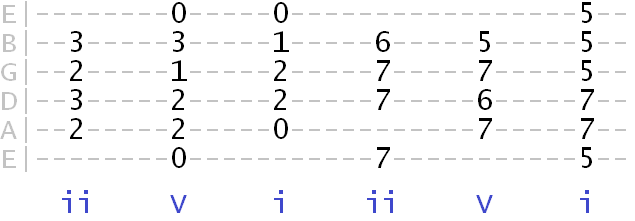
ii Chord Pentatonic Scales
Over the 2 chord, minor pentatonic in the tonic position would do the job in most cases.
So over Bm7b5, A minor pentatonic would be our stock choice.
But there's an alternative which we can use to really bring out the diminished flavour of the 2 chord.
From the previous lesson, we know that we can use an altered dominant pentatonic scale over the 5 chord to enhance its tension...

Over the 2 chord, all we need to do is raise the 3 of that pattern by one fret/semitone.
This gives us a diminished pentatonic scale we can use over the 2 chord.

It works, because the diminished triad tones are there from the 2 position: 1, b3 and b5, as well as the b7 making up a m7b5 chord or arpeggio. So the scale kind of acts as an extended 2 chord arpeggio...

Like previous pentatonic scales we looked at, both these 2 chord pentatonic options can be seen as derived from natural minor in the tonic position (so A natural minor in this key), since a diminished, and by extension, m7b5 chord naturally occurs on its 2nd degree.
Use the 2 chord backing track below the diagrams to explore both the seven-tone natural minor and the pentatonic options (mix them up!)...



Jam It!
Practice your Bm7b5 scale phrasing over the backing tracks below - one in a jazz style, the other with strummed open chords.
They both cycle through a 2 5 1 sequence in A minor, but for the moment just focus on that 2 chord.
Try both pentatonic scale patterns (and A natural minor) from the diagrams above...
Let's now move to the 5 chord.
V Chord Pentatonic Scales
In the previous part, we learned a pentatonic scale that works well over the V chord in most situations, and give it a little tension.
But there are variatons to consider, depending on the chord flavour we want to imply.
In jazz and blues, for example, the V chord is often extended to a 9th chord. This is where we add a 9th (the equivalent of a 2 in scale terms) to the regular dominant 7th chord.
This 9th can be natural, or altered in the form of a sharp or flat 9th.
Here's how we might voice these chords in the key of A minor - so the 5 chord would be on (play them and get to know their sound!)...
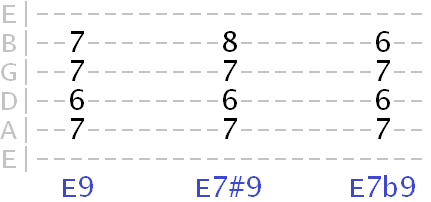
Let's start with the natural 9th (E9)...
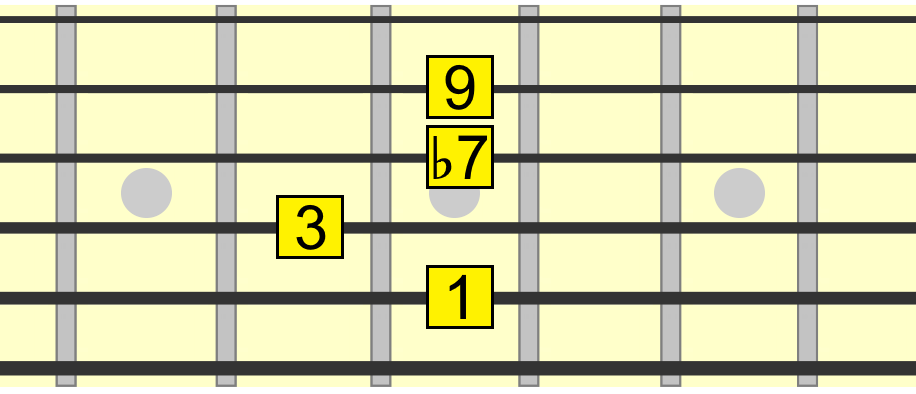
Now, unlike the more tense dominant sound we covered before, this natural 9th gives the V chord a sweeter sound.
We could simply play major pentatonic on the 5 position to complement this (that's E major pentatonic in this key)...

Here I'm playing from the 2 chord, Bm7b5, to E major pentatonic on the 5...
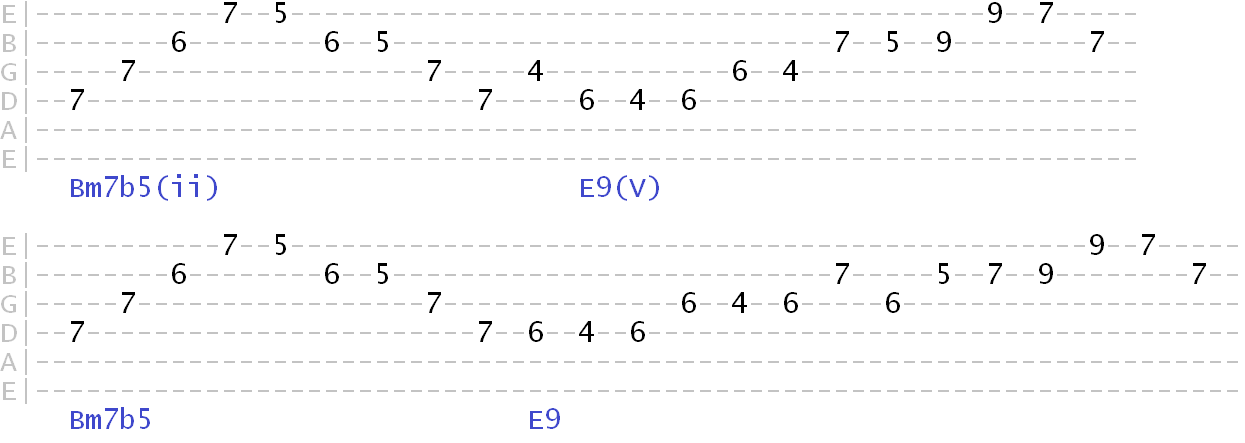
This actually has quite a haunting sound, because we're moving from the dark tension of the diminished 2 chord to a strangely bright and relaxed 5 chord, when most ears are expecting the tension to continue.
That unpredictable contrast adds some musical interest.
Another option is to colour around a #9 dominant. In chord form, you may have heard this referred to as the "Hendrix chord" (although he didn't exactly invent it. He just popularised it in rock music!)...
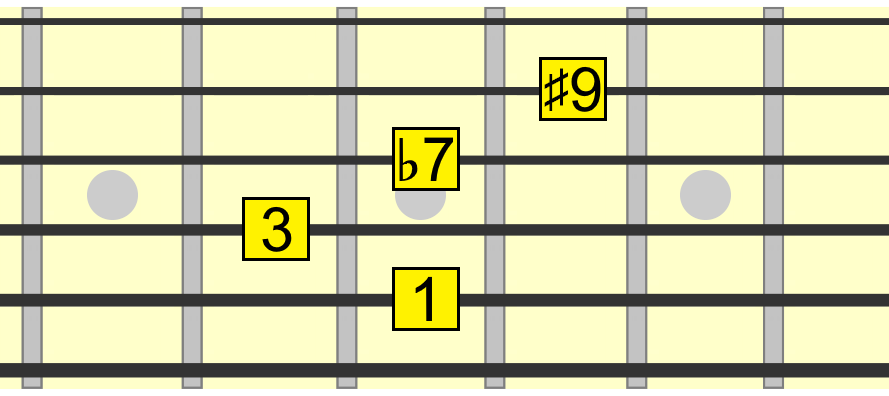
To bring out that #9 flavour, all we need to do is play minor pentatonic on the 1 position.
That means we don't even have to change our tonic minor pentatonic scale!
So A minor pentatonic would work in the key of A minor, as it perfectly complements the bluesy sound of the #9 V chord.

And what about a b9 (flat 9) dominant?
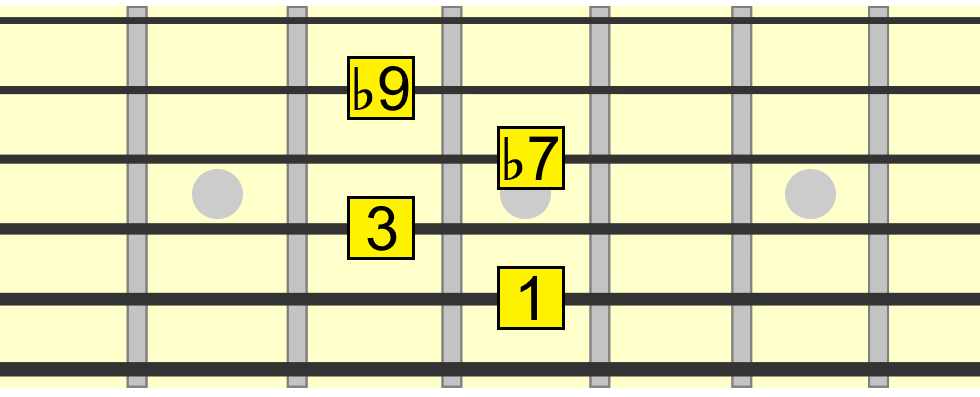
Well, this was covered by our altered dominant pentatonic scale from the previous part.
The b2 of the scale is the same colour tone as (enharmonic to) the b9 of the chord (can you see the chord shape in the pattern?)...

Side note: This is how to think about scales - as connected to the chords you're playing over.
You can bring out certain chord qualities in the tones you select for your solos. So if, for example, the 5 chord was just a standard dominant 7th chord (e.g. E7), YOU choose how you extend that chord, the overall flavour of that chord, by the tones you play in your solo.
Jazz musicians refer to this as the chord-scale system - matching several possible scales to their base chord.
Jam It!
Same tracks we used with the 2 chord. This time, try playing through both the 2 and 5 chords, and apply the 5 chord options from above.
Remember, YOU choose how you colour these chords as I've left out extensions such as the 9th (they're just basic 7th chords).
Note that the #9 / minor pentatonic colour works best in a jazz context!
i / Tonic Chord Alternatives
Over the tonic minor chord, minor pentatonic would of course be our standard choice.
But we can use a similar method of changing scales to highlight different chord qualities.
For example, try this scale, which can be seen as minor pentatonic built on the 5 position. So in the key of Am, simply play E minor pentatonic...


This gives us a 9th flavour (e.g. Am9), because of the 2 in the scale (the 9 and 2 are basically the same tone).
Or we could highlight the chord tones of an extended minor 6th chord for something a bit jazzier.
It's a big chord! Here's how such a chord might be voiced (Am6/9)...
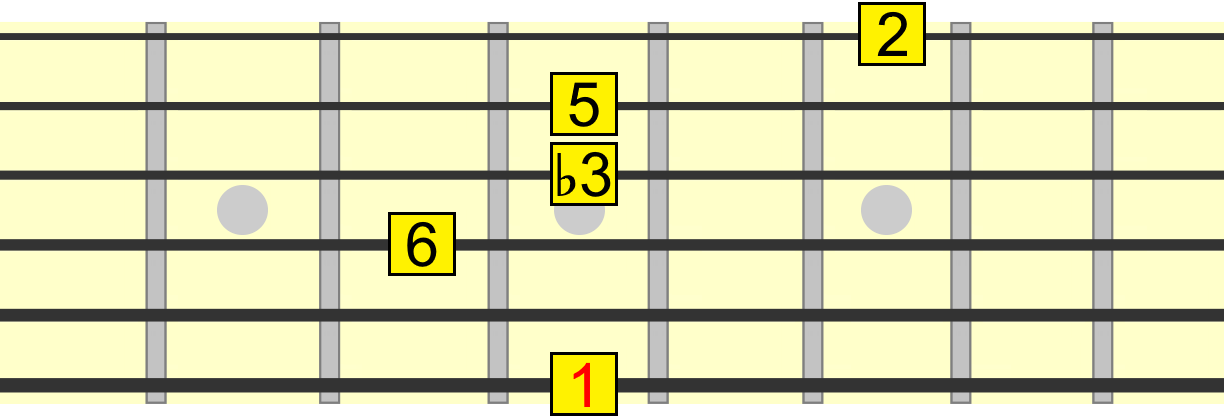
And here's its equivalent pentatonic scale...


By omitting the 1 from the scale, and introducing a major 7th, we get more of an "outside" sound over the tonic.
This is straight out of the melodic minor scale, and a common resolving tonic in jazz music.
Jam It!
Now we can try playing through the full 2 5 1 sequence!
Along with the acoustic track, there are two jazz tracks - one resolves to Am7, the other to Am6.
The Am6 track will be best suited for the minor 6th scale above.
Strummed Track
Resolving to Am7
Resolving to Am6
A Minor 2 5 1 Example
Below is a tab of the outro clip in the video. See if you can identify which scales have been used over each chord (answers below!)...
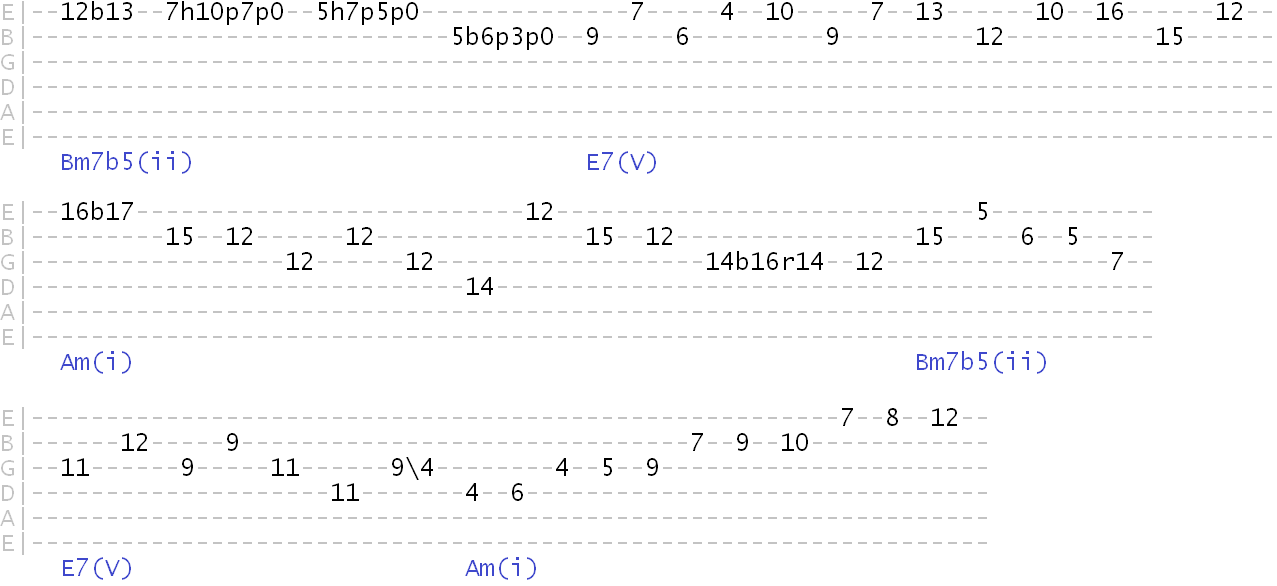
Answers (in sequence order)...
- Bm7b5 - half diminished pentatonic scale
- E7 - Altered E pentatonic scale giving us a b9 colour
- Am - E minor pentatonic giving us a minor 9th colour
- Bm7b5 - half diminished pentatonic again
- E7 - E major pentatonic giving us a dominant 9th colour
- Am - A minor 6th pentatonic giving us a minor 6th/major 7th colour
A Final Note
All in all, we've seen and heard how there are several options available to us for using pentatonics in minor keys.
The beauty of pentatonic scales is that they act as extended arpeggios, since we're only adding two colour tones to the triad tones.
This gives pentatonic scales a very direct connection to the chords we're playing over, and a good place to start with building musical phrases.
I hope you enjoyed this journey!
